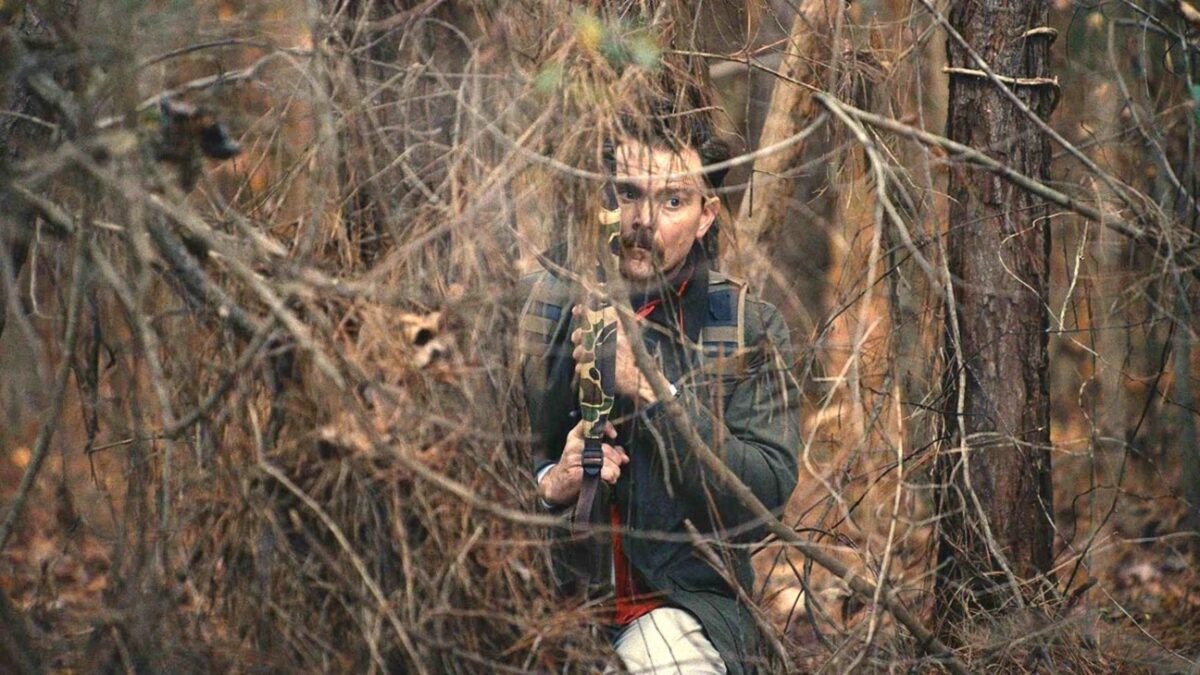
Freedom and experimentation are the keys to success.
This post was written by Yvette M. Amirian.
When I first received the script for The Integrity of Joseph Chambers, I didn’t know much about the project other than some familiarity with Robert Machoian, its writer and director.
I loved the simplicity and elegance with which he handled his previous feature, The Killing of Two Lovers. I was pleased to see that this new script echoed some of those stylistic choices. I was also excited to see some deviation from it in terms of new opportunities it presented, especially the unique challenges of cutting a story like this together.
The first and third acts include multiple characters, locations, and traditional dialogue scenes, but the middle section of the film is largely a single character alone in the middle of the woods. He is isolated, completely out of his element, and only has himself to converse with and turn to after making the biggest mistake of his life.
There’s a lot you need to do as an editor to weave those pieces together and have them make sense, and delve into the character’s psyche, all while keeping your audience entertained.
Similar Sensibilities While Maintaining Flexibility
As I started going through the film’s dailies, Robert shared some references to help me understand his decisions in terms of coverage or angles but wanted me to bring my own choices and sensibilities to the initial assembly. I think it was a pleasant surprise for both of us through this process, to learn that we both gravitated toward the same takes, shot choices, and, most especially, pacing.
From there, we worked together closely to craft what the film would ultimately become. It took a lot of trial and error — lifting lines or whole scenes, reshuffling them, reshaping performances — to discover the appropriate tone for the film as a whole.
Robert had edited his last feature himself, and I was initially nervous about how that might impact our work with me at the editorial helm on this one. What I found was that being an experienced editor himself, he understood the value of bringing a fresh set of eyes to a project. More importantly, he understood that story, performance, and character development take precedence above anything else.
As a result, he gave me a lot of freedom to experiment with performances and story structure. It also made our communication seamless, and we quickly developed a shorthand for what we were trying to establish as the editorial language of the film. Above all else, it allowed us both to be receptive and trusting. He kept an open mind if I wanted to try something new, and I did the same when he had a vision for a piece I couldn’t quite see yet.
Solving (Seemingly) Unsolvable Problems
There was one sequence of scenes that had been written into the script in a very specific way, but, for several reasons, they didn’t track that way in the dailies. As I assembled them, we started to realize that the sequence of events was confusing.
Coming from a background in documentaries, this was not an unfamiliar problem for me. I would frequently come across a sequence of archival footage or interviews that didn’t make sense, and it was my job to reorganize and track the story appropriately. This usually also involved a heavy amount of sound and music editing, as well as crafting a visual style, to help create pace and structure in an otherwise loose sequence.
In documentaries, you are so often not just an editor, but in many ways, you’re also a writer on those projects. I have found those challenging experiences in my nonfiction work, made me a stronger editor when it comes to crafting performances or tackling complicated scenes in my fiction work.
I was able to bring that unique perspective of problem-solving to this particular sequence on The Integrity of Joseph Chambers, as well. I appreciated that Robert trusted me to spend some time on that section alone, and was thrilled that he was so impressed with the best outcome, which resolved our structural issue and painted the story in a much clearer and simpler way.

Trust and Respect: The Keys to a Successful Collaboration
I think that echoes our entire process of cutting this film. Our collaboration developed through trust and mutual respect for what we each brought to the table. My goal was to help execute his vision and bring it to life, and there was a lot of openness to experimentation on both parts to make that happen.
No suggestion was ever too crazy, we were always willing to try it because, at the end of the day, the goal was to make the best version of the film we could. I’m proud to say I think we accomplished that by working so fluidly together. In the end, I believe trust and respect are key to any truly successful collaboration, but certainly one between an editor and their director.














